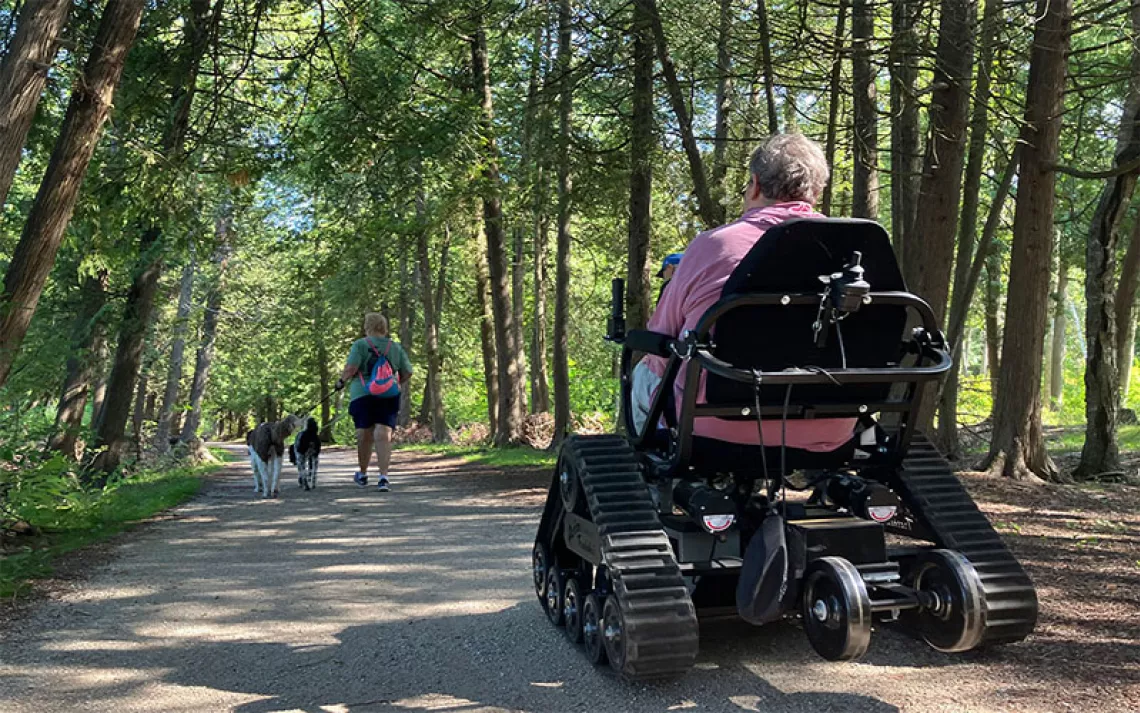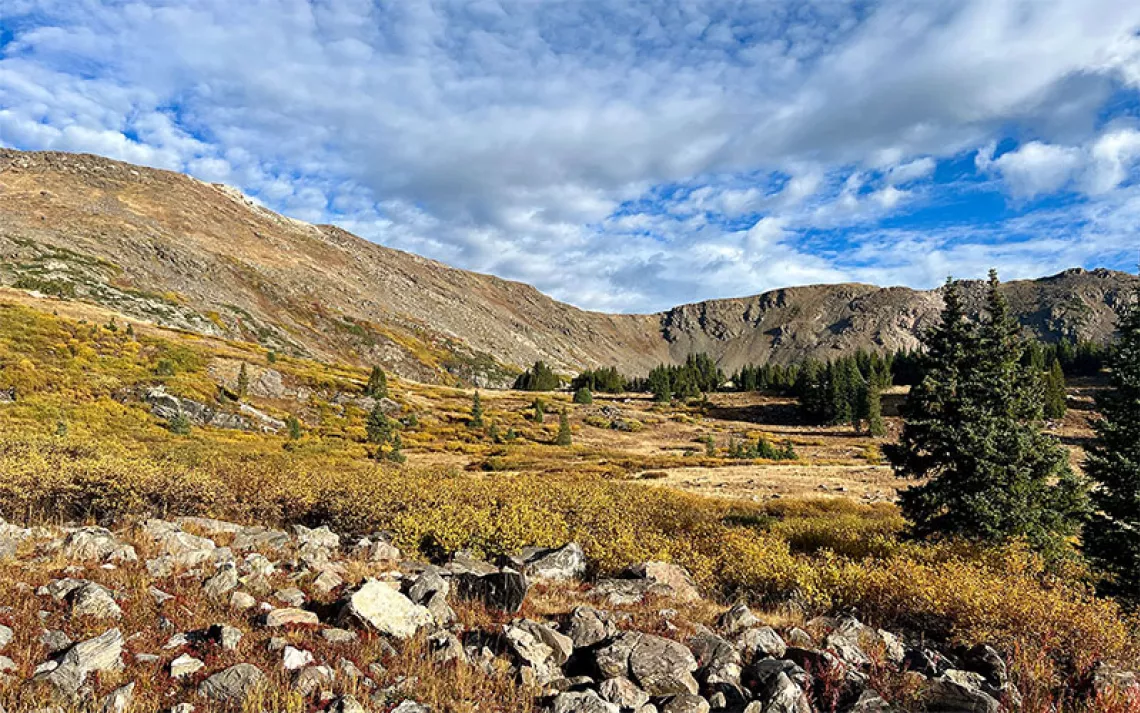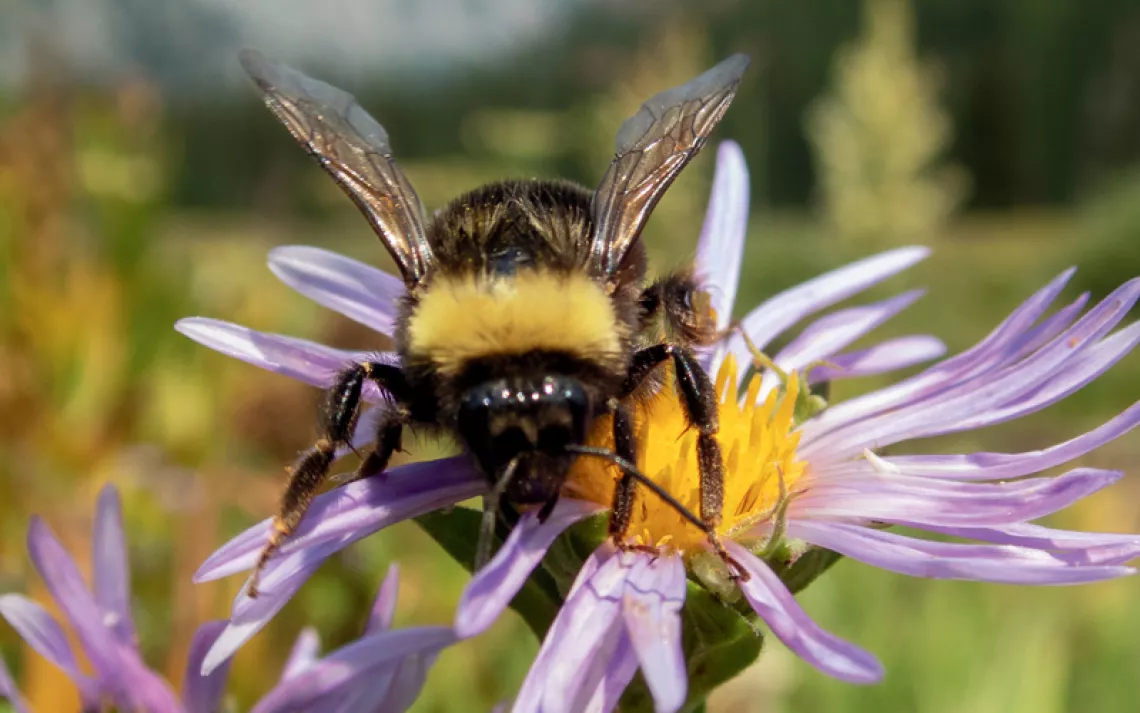Walking It Off
Post-election reflections from the Sleeping Bear Dunes
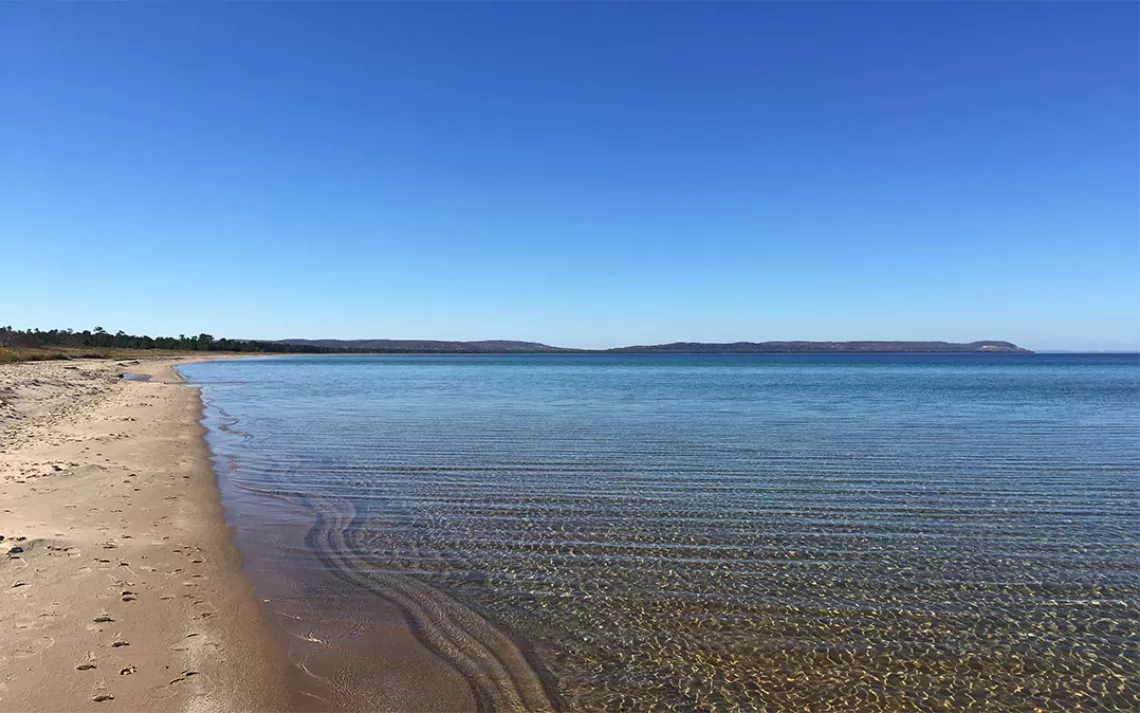
Photos by Christopher Schaberg
The lakeshore before me is expansive: a 10-mile swoop of Lake Michigan coastline with no houses visible, only two public access points, and a backdrop of dense beech and maple forests that rise up from the pines and dunes below. I never get tired of this walk. In the distance, red foxes will dart down to the water and back to the cover of juniper before I get too close. Piping plovers and sandpipers dance at the water’s edge, mining the wet sand for insect larvae. It is late in the season for dragonflies, but one iridescent-bodied outlier clings uncertainly to a blade of dune grass, likely its last flight before the wind shifts to the north tomorrow and the first winter cold front pummels the peninsula.
Michigan's Sleeping Bear Dunes National Lakeshore is a stunning place, but I don’t want to romanticize it too much. The nearby towns are reliant on a tourist economy, especially in the summer months—thus creating a familiar, vexed dynamic between the stoic locals and lavish vacationers. The place itself is beautiful but can also be severe. Every year people die in the lake: from hypothermia after boating accidents, or from trying to swim in fierce rip currents. I’ve gotten lost here several times in the labyrinthine cedar swamps and in the thickest parts of the forested hills in midsummer, when the foliage blocks out the sunlight and disorients my sense of direction. The other day I ran across a mangled coyote carcass in a dogwood grove, apparently the result of some wild scuffle in the night. Like a crime scene, a foul scent lingered in the air, and branches were bent and torn. Sometimes the lakeshore seems more like a Cormac McCarthy novel than an Emersonian treatise on Nature.
Now on the beach I notice another uncanny object: a dead loon washed up on the sand, its feathers crumpled by the waves and its head flipped back in an unnatural comportment. This isn’t an anomaly—it’s the fourth one I’ve seen today. The national lakeshore has posted information on its website explaining that the recent die-off of loons along this lakeshore has been caused by botulism E outbreaks, which they are studying. It’s sad, as I’ve seen the loon population bloom here since I was a kid. When I was younger, it was rare to see them on the inland waters, but now when I go out fishing, I will usually see a group of loons nearby, working a cove with their diving fishing techniques, or performing their mad splashing mating rituals while I wade the opposite shoreline. One evening this past summer, my son and I were out in our canoe on a mirror-calm lake and we drifted to within 20 feet of three loons; when they made their haunting calls, from this close proximity the sounds had an altogether different affect than hearing them from afar, and my son got a kick out of the expression “laughing loons.”
Lately I’ve been using these long walks as a kind of self-imposed therapy—physical sessions in which to cope with the aftermath of the recent presidential election, which completely blindsided me. I force myself off the endless scrolling of my Twitter feed and the relentlessly depressing news cycle and just walk. Out on the lakeshore, I wonder about the last time Donald Trump was this far away from other people—if he has ever been. There’s a kind of reflection made possible here that punctures the ego and humbles one in the face of vast, enduring processes such as dune succession and cloud formation.
This place is, of course, affected by human impact and pressures; the National Park Service dedicates a page on its website to climate change, encouraging visitors to take proper steps to decrease energy consumption and increase efficiency. The information also serves to reinforce a basic understanding: As impressive and sublime as this lakeshore is, it’s not immutable. It’s as fragile as it is precious. The dead loons on the beach are indicators of this fragility, stray white-dotted black feathers now mixed in with the snarls of dried dune grass and balloon strings.
Troublingly, the president-elect’s “policies” page on his website doesn’t even list the environment as a category. During the campaign, commentators noted the striking absence of the environment as a topic after each of the three presidential debates. It was like a case of widespread cultural amnesia, as if we had all forgotten that we actually live on a planet that is teetering on the brink of irreversible changes likely hastened by one species in particular: us. And now that Trump’s reign is imminent, how will this denial play out at the level of funding and support, not just for the national parks but for the wide range of environmental issues and ecological realities that riddle the country’s conflicting desires for change?
I process these thoughts as I walk the beach, at turns disheartened and inspired, confounded and calmed.
Since the election, my email inbox has been relatively empty. I would normally welcome this aberration, except that it bespeaks the mass shock and despair felt far and wide. At least, this seems to be the case among the people with whom I am normally in contact: students, colleagues, and collaborators. Everyone is adjusting to this new reality, which flies in the face of the causes and ideas that we have worked hard for everyday: gender equality, social justice, nondiscrimination, and environmental awareness, to name a few. There is a palpable sense among many that things have shifted for the worse. Hopefully, we can counter that by getting engaged, by taking action. But we’re still moving through the denial and anger phases, for now.
I’m fortunate to be at a remove as I contemplate these things. I’m spending the year with my family up in Michigan while on sabbatical. We live on a hillside at the edge of the national lakeshore, with only a few other houses in the vicinity. It gets dark early up here, the nights long. On Election Day we went to bed early, happy to see the results in the morning—we have no internet or TV at home, and our so-called smartphones only work somewhat reliably if we hike to the top of the hill. We read to our children and tucked them in. We slept in blissful ignorance that night and awoke to a nightmare. I’m trying to walk this nightmare off, here on the beach.
I still have a few miles to go before I get home. The white pine trees etch ideograms on the horizon, and stretches of wind-sculpted sand and mosaics of rocks mark my path. Over the past couple weeks, I’ve found myself standing alone in the middle of this stretch of shoreline, no one in sight for five miles in either direction, at once comforted and in a heightened state of anxiety. Ecological thought and environmental activism seem more important than ever, and yet (or maybe because) at this exact time we are ushering in a leader who seems to have no regard for the very biosphere that surrounds the country he wishes to make great again.
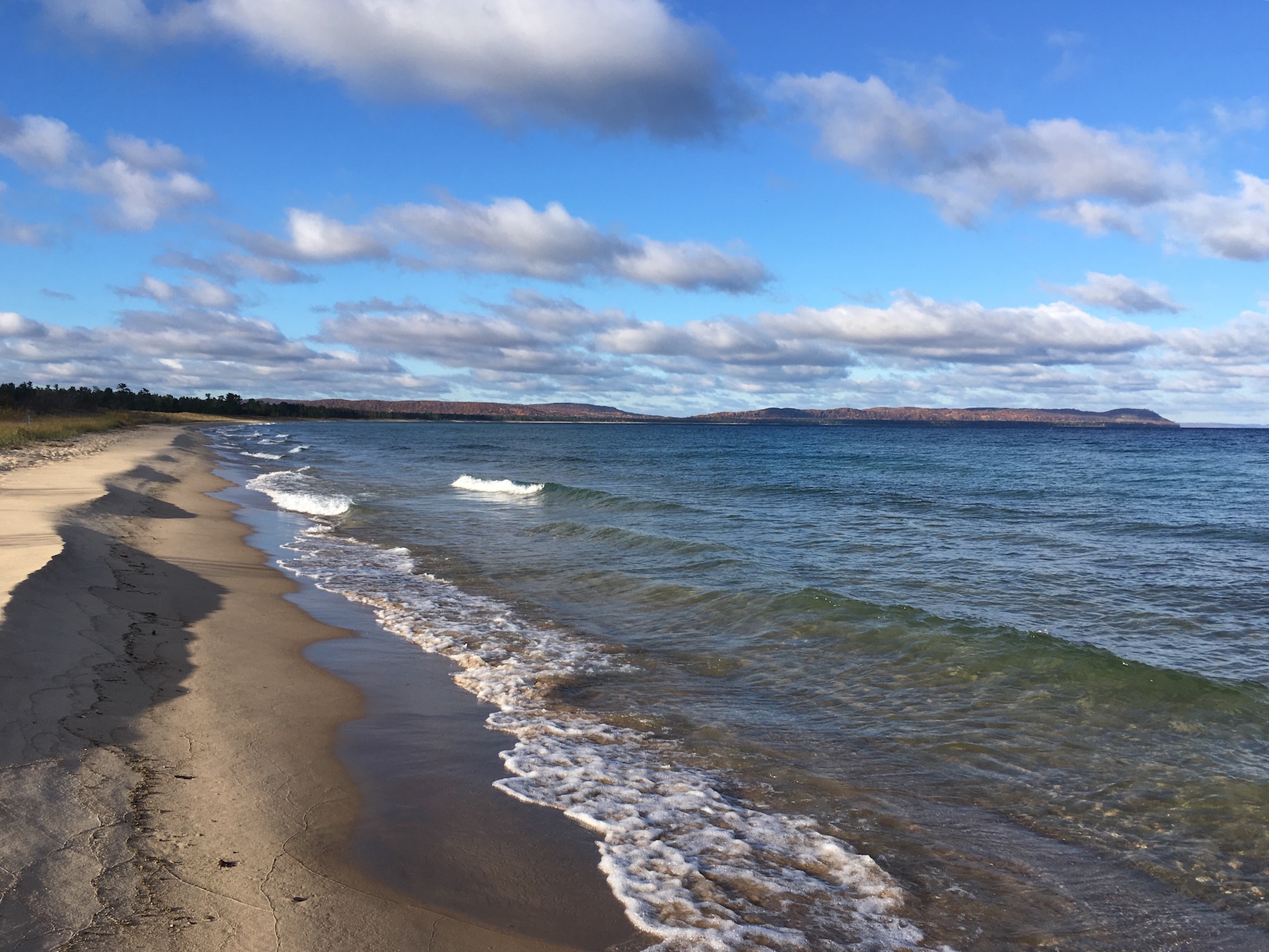 The former camp counselor and river guide in me wishes I could wrest Donald Trump from his high tower and take him on a long walk with me on this beach. I’d point out a thing or two, and let him be swept over by the expansiveness of this ecotone. But I know, too, that this is a simplistic and fraught desire: to let nature be Trump’s teacher. The truth is, Trump is himself a force of nature, a leader (for now) of an indicator species that is shaping the planet.
The former camp counselor and river guide in me wishes I could wrest Donald Trump from his high tower and take him on a long walk with me on this beach. I’d point out a thing or two, and let him be swept over by the expansiveness of this ecotone. But I know, too, that this is a simplistic and fraught desire: to let nature be Trump’s teacher. The truth is, Trump is himself a force of nature, a leader (for now) of an indicator species that is shaping the planet.
I look up and see the contrails of a jet arcing in the sky, a wide-body airliner on its way somewhere, the engine condensation dissipating into the surrounding cirrus clouds. After the election, I read several accounts by people who were on transatlantic flights as the polls closed and votes were tallied; they began their journeys in one world and landed in quite another. I feel as though I have had this experience, too, though on the ground and in a relatively remote and quiet place. Still, like the plane above me now, I sense that I am in motion. The planet continues its steady revolutions around our sun, and I won’t stop working for what I believe in. One step back, two steps forward—that’s what I’ve been telling myself of late.
Stepping along the shoreline, something crunches underfoot: It’s a cluster of zebra mussels, an invasive species that infiltrated and changed the ecosystem of the Great Lakes over the past nearly 30 years. I recall when I was a boy, when zebra mussels first began appearing in huge quantities—sometimes there would be enormous drifts of their shells on the beach, altering the sand composition and making the lakeshore an alien space. The National Park Service and other agencies worked hard to curb the influx and keep the zebra mussels from spreading inland. It is an ongoing process, and a problem far from resolved. As zebra mussels are a filter feeder, they absorb toxins and have lead to the spread of avian botulism. The zebra mussels, the loons, and myriad other creatures and vegetal beings are tangled up together on this coastline that, however beautiful it may appear from a certain vantage point, is anything from pristine.
Here I am seeing another complex facet of this place, and an allegory, perhaps, for this political moment. Whatever gains have been made over the past eight or 50 years, things were far from perfect—a lot of work remains, and perhaps now that endemic hatred and structural inequalities seem to be amassing like so many zebra mussels on the shore, perhaps it will crystalize our determination to keep working, to attend to this world, amid all its complexities and mounting problems. Just as President Barack Obama remarked that history doesn’t always move in a straight line, so too with ecology: It’s a work in progress, and one that, if we’re lucky, we can both respect and be an active part of, even as—especially when—invasions and disruptions occur. The beach is still here; the journey is far from over.
 The Magazine of The Sierra Club
The Magazine of The Sierra Club
